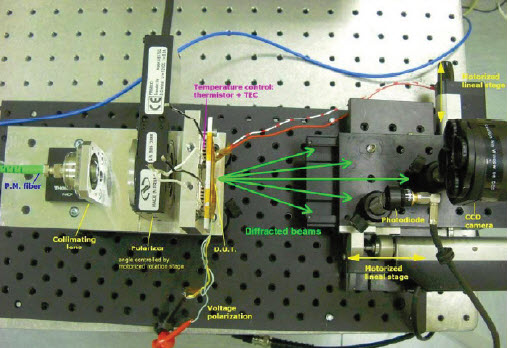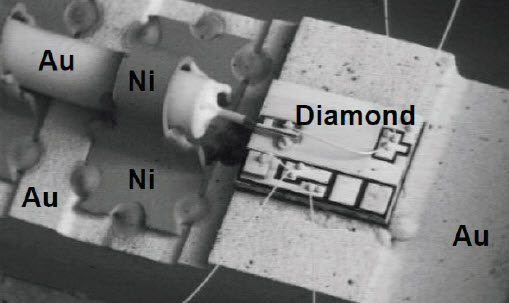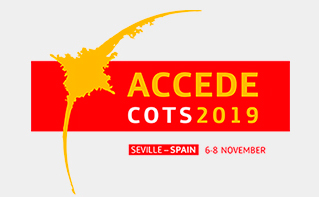
Electronic components for motor vehicles: the solution in New Space?
- Posted by Demetrio López
- On September 16, 2021
- 0
The space industry is becoming an increasingly competitive sector, requiring systems with better performance at a lower cost. This is particularly applicable to small satellites and what is now known as New Space. This trend has consequences at all levels of the production chain, including the selection, acquisition and verification of the electronic components used.
The certified components available for space applications are not able to meet the needs of current missions, either because of their cost or because of their limited availability, lack of new functionalities, degree of miniaturization, etc. This is especially true for optoelectronic devices for which there is no space-qualified component when photonic technologies are a clear driver of the new generation of space systems.
Optoelectronic devices (LEDs, photodetectors, fibre optics, etc.) have not only begun to be used recurrently in space, but also classic components (such as solar sensors, CMOS cameras, etc.) are becoming key elements for success of various instruments and missions.
There are well-known advantages to using these photonic technologies in space, such as the limited generation of noise, electromagnetic immunity, mass reduction, greater bandwidth and great ability to multiplex signals, enabling a high volume of data transmission, etc. Undoubtedly, all this makes its use very attractive. However, we must first overcome the lack of availability of these qualified components for this sector.
Likewise, electronic components designed for other industrial applications, such as the car industry, are beginning to show high levels of reliability when they are produced in large volumes and when they are subject to dedicated rating schemes (e.g. AEC Q), and their use could be a solution to the problems described above for the space sector. However, there is still a significant distance between space requirements and the potential reliable use of parts not designed for this sector.
The AEC was created in the nineties, as a result of several discussions among leading automotive manufacturers: DELCO Electronics, Chrysler, Ford, etc. Its impetus was mainly due to the difficulties they faced in obtaining certified electronic parts to meet the needs of their sector, with the aim of achieving a common certification scheme. With these considerations in mind, the AEC Q100 standard (Qualification test for integrated circuits) was developed, which today involves more than twenty recognized automotive equipment suppliers and more than thirty electronic component manufacturers.
The qualification flow that was designed is robust and covers the types of degradation mechanisms attributable to components during a standard automotive application. However, if we compare these requirements with the standards used in Europe for space, the ESCC system, there are not only some differences associated with the test flows and sample sizes used, but also some key differential elements:

Picture 1: Summary of the measurement bank.

Detail of an internal visual inspection of a semiconductor
laser
We must emphasise the importance of knowing all fundamental failure modes that can be suffered by automotive parts during a space mission, including all pertinent aspects in the test plan, from a radiation test, to the verification of degassing levels, or the possible presence of prohibited materials, using appropriate inspection techniques: electrical measurements, X-ray inspection, acoustic verification (CSAM), electronic microscopy (SEM), EDAX, X-ray fluorescence, etc.
It should be considered that activities on a component level must be complemented by and connected with other actions that influence the reliability of the final equipment, from the design itself (introduction of redundancies, etc.), to the tests carried out at higher levels of integration.
The added value of all these processes is based on adequate engineering work, in-depth knowledge of the technologies to be evaluated, together with experience and access to the necessary test methods and inspection techniques. Once the batch has passed the planned research and test activities, it is deemed trustworthy for use in the application.
On the other hand, the normal way to acquire parts within the automotive sector is with the use of a PPAP (Production Part Approval Process). The PPAP is a valuable tool for trusting component suppliers and their production processes, but it requires orders of large quantities of parts, larger than those needed in the space sector, even considering the new needs of the mega-constellation of satellites.
In line with these considerations, the AEC qualified automotive components are clearly not a direct replacement for the qualified components for use in space and do not fully meet the sector’s demands; however, they remain of high interest and have great potential for use in space, designing protocols that complement this difference and enabling the level of confidence required by the sector to be reached.
Demetrio López
Alter Technology Innovation Director
GET IN TOUCH TODAY!
Do you have questions? Contact us!
- Electronic components for motor vehicles: the solution in New Space? - September 16, 2021



0 comments on Electronic components for motor vehicles: the solution in New Space?